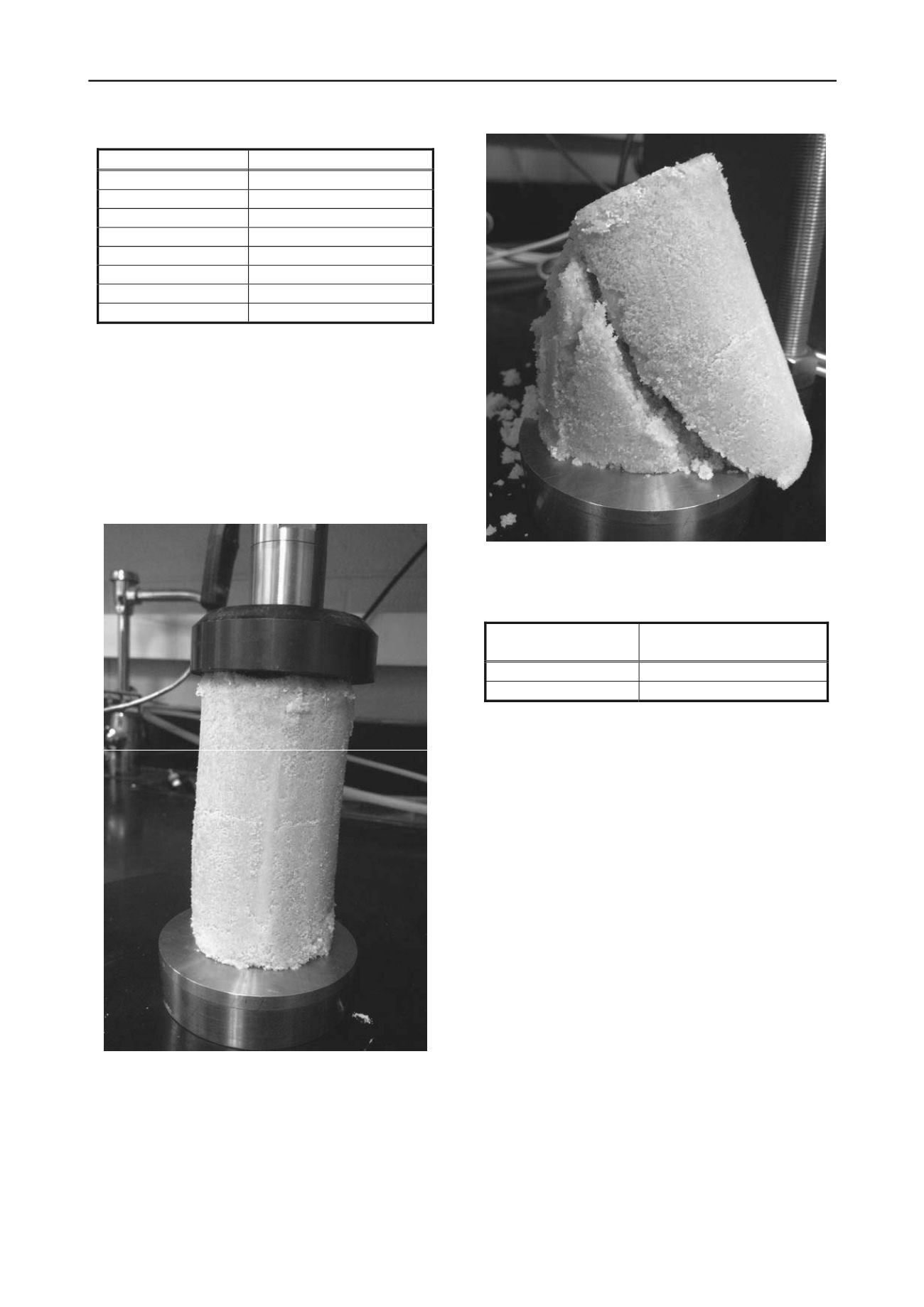
2567
Technical Committee 211 /
Comité technique 211
table iii. summary of mass of calcium carbonate
soil column
mass of caco
3
(%)
1 (top)
0.082
1 (bottom)
0.081
2 (top)
0.102
2 (bottom)
0.103
3 (top)
0.070
3 (bottom)
0.068
4 (top)
0.070
4 (bottom)
0.068
3.2 Cemented Sand Compressive Strength
Unconfined compression tests were performed on the
cemented soil columns (figure 4 and figure 5). as mentioned,
the mass of precipitated calcium carbonate is relatively small
compared to published results from other micp treatment
studies; however even at low mass of calcium carbonate levels,
unconfined compression tests were able to be performed on the
cemented sand columns. a summary of the compression test
results are listed in table iV.
figure 4. cemented soil column mid-test
during the unconfined compression test.
figure 5. failed cemented soil column at the
end of the unconfined compression test.
table iV. summary of compressive strength
soil column
Unconfined compressive
strength (kpa)
1
5.2
4
5.4
as indicated in table iV, unconfined compression tests were
performed on only two of the four columns. two of the soil
columns were not able to be tested because they were
disturbed during extraction from the soil column walls. the
cemented soils were especially vulnerable because of the low
levels of cementation. to rectify the tendency for disturbance,
the soil in the remaining columns was extracted from the soil
column walls by creating vertical slices through the acrylic
walls and allowing the soil to be removed through the sliced
opening.
the unconfined compressive strength of the cemented sand
columns was about 5 kpa. other studies found that micp
treated ottawa 50-70 sand could get compressive strengths of
about 170 to 350 kpa at higher levels of cementation (faison
and mahin, 2012).
the angle of the failure plane in soil columns 1 and 4 was
about 63 degrees from the horizontal. this failure plan angle
is representative of soil with a friction angle of 36 degrees.
Untreated ottawa 50-70 sand has a friction angle of about 33
degrees (montoya, 2012). Based on previous work, micp
treated sand with a friction angle of 36 degrees is typical of
sand treated to a shear wave velocity of 400 m/s (montoya,
2012). an approximate shear wave velocity of 400 m/s
corresponds to the strength data, indicating the cemented soil
columns represent lightly cemented sand.
for use as a treatment process for costal sand deposits, an
appropriate level of micp cementation should be used. a high
enough level of cementation should be used to resist induced
shear loads from waves and storm surges, and a low enough
level of cementation so that native wildlife, such as birds,
burrowing animals, and dune grass, can still interact with the
coastal deposits. further work will include upscaling the


